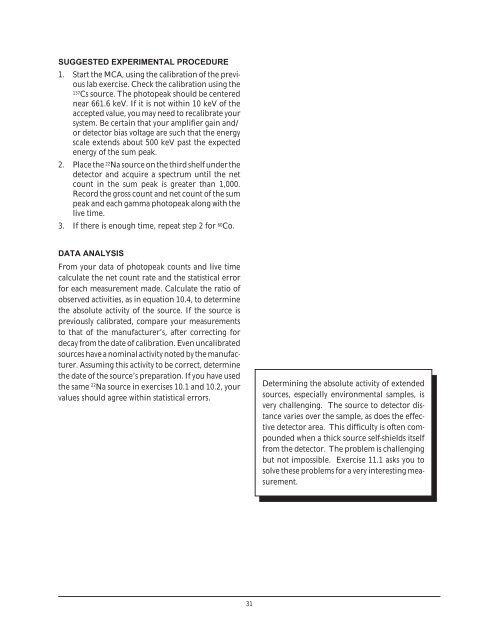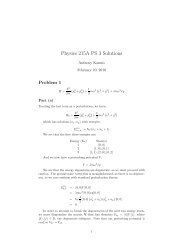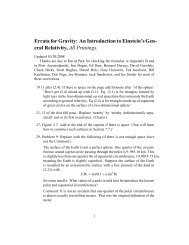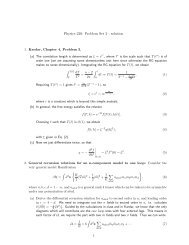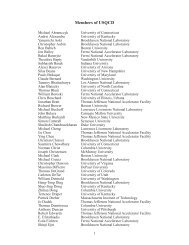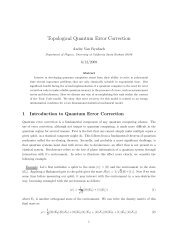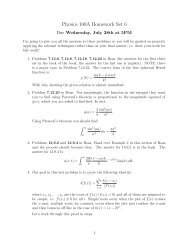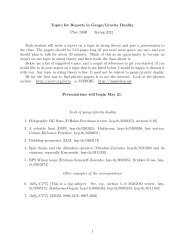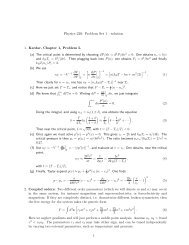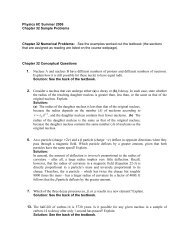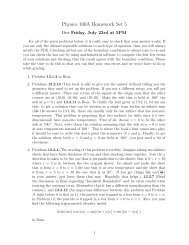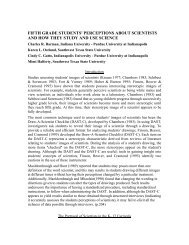Nuclear Spectroscopy
Nuclear Spectroscopy
Nuclear Spectroscopy
Create successful ePaper yourself
Turn your PDF publications into a flip-book with our unique Google optimized e-Paper software.
SUGGESTED EXPERIMENTAL PROCEDURE<br />
1. Start the MCA, using the calibration of the previous<br />
lab exercise. Check the calibration using the<br />
137<br />
Cs source. The photopeak should be centered<br />
near 661.6 keV. If it is not within 10 keV of the<br />
accepted value, you may need to recalibrate your<br />
system. Be certain that your amplifier gain and/<br />
or detector bias voltage are such that the energy<br />
scale extends about 500 keV past the expected<br />
energy of the sum peak.<br />
2. Place the 22 Na source on the third shelf under the<br />
detector and acquire a spectrum until the net<br />
count in the sum peak is greater than 1,000.<br />
Record the gross count and net count of the sum<br />
peak and each gamma photopeak along with the<br />
live time.<br />
3. If there is enough time, repeat step 2 for 60 Co.<br />
DATA ANALYSIS<br />
From your data of photopeak counts and live time<br />
calculate the net count rate and the statistical error<br />
for each measurement made. Calculate the ratio of<br />
observed activities, as in equation 10.4, to determine<br />
the absolute activity of the source. If the source is<br />
previously calibrated, compare your measurements<br />
to that of the manufacturer’s, after correcting for<br />
decay from the date of calibration. Even uncalibrated<br />
sources have a nominal activity noted by the manufacturer.<br />
Assuming this activity to be correct, determine<br />
the date of the source’s preparation. If you have used<br />
the same 22 Na source in exercises 10.1 and 10.2, your<br />
values should agree within statistical errors.<br />
Determining the absolute activity of extended<br />
sources, especially environmental samples, is<br />
very challenging. The source to detector distance<br />
varies over the sample, as does the effective<br />
detector area. This difficulty is often compounded<br />
when a thick source self-shields itself<br />
from the detector. The problem is challenging<br />
but not impossible. Exercise 11.1 asks you to<br />
solve these problems for a very interesting measurement.<br />
31


